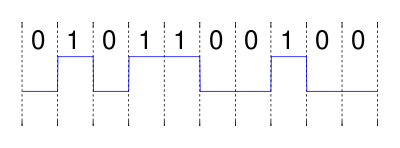Derivation
Derivation via matrix algebra
The following section derives the matched filter for a discrete-time system. The derivation for a continuous-time system is similar, with summations replaced with integrals.
The matched filter is the linear filter, , that maximizes the output signal-to-noise ratio.
where is the input as a function of the independent variable , and is the filtered output. Though we most often express filters as the impulse response of convolution systems, as above (see LTI system theory), it is easiest to think of the matched filter in the context of the inner product, which we will see shortly.
We can derive the linear filter that maximizes output signal-to-noise ratio by invoking a geometric argument. The intuition behind the matched filter relies on correlating the received signal (a vector) with a filter (another vector) that is parallel with the signal, maximizing the inner product. This enhances the signal. When we consider the additive stochastic noise, we have the additional challenge of minimizing the output due to noise by choosing a filter that is orthogonal to the noise.
Let us formally define the problem. We seek a filter, , such that we maximize the output signal-to-noise ratio, where the output is the inner product of the filter and the observed signal .
Our observed signal consists of the desirable signal and additive noise :
Let us define the auto-correlation matrix of the noise, reminding ourselves that this matrix has Hermitian symmetry, a property that will become useful in the derivation:
where denotes the conjugate transpose of , and denotes expectation (note that in case the noise has zero-mean, its auto-correlation matrix is equal to its covariance matrix).
Let us call our output, , the inner product of our filter and the observed signal such that
We now define the signal-to-noise ratio, which is our objective function, to be the ratio of the power of the output due to the desired signal to the power of the output due to the noise:
We rewrite the above:
We wish to maximize this quantity by choosing . Expanding the denominator of our objective function, we have
Now, our becomes
We will rewrite this expression with some matrix manipulation. The reason for this seemingly counterproductive measure will become evident shortly. Exploiting the Hermitian symmetry of the auto-correlation matrix , we can write
We would like to find an upper bound on this expression. To do so, we first recognize a form of the Cauchy–Schwarz inequality:
which is to say that the square of the inner product of two vectors can only be as large as the product of the individual inner products of the vectors. This concept returns to the intuition behind the matched filter: this upper bound is achieved when the two vectors and are parallel. We resume our derivation by expressing the upper bound on our in light of the geometric inequality above:
Our valiant matrix manipulation has now paid off. We see that the expression for our upper bound can be greatly simplified:
We can achieve this upper bound if we choose,
where is an arbitrary real number. To verify this, we plug into our expression for the output :
Thus, our optimal matched filter is
We often choose to normalize the expected value of the power of the filter output due to the noise to unity. That is, we constrain
This constraint implies a value of , for which we can solve:
yielding
giving us our normalized filter,
If we care to write the impulse response of the filter for the convolution system, it is simply the complex conjugate time reversal of the input .
Though we have derived the matched filter in discrete time, we can extend the concept to continuous-time systems if we replace with the continuous-time autocorrelation function of the noise, assuming a continuous signal , continuous noise , and a continuous filter .
Derivation via Lagrangian
Alternatively, we may solve for the matched filter by solving our maximization problem with a Lagrangian. Again, the matched filter endeavors to maximize the output signal-to-noise ratio () of a filtered deterministic signal in stochastic additive noise. The observed sequence, again, is
with the noise auto-correlation matrix,
The signal-to-noise ratio is
where and .
Evaluating the expression in the numerator, we have
and in the denominator,
The signal-to-noise ratio becomes
If we now constrain the denominator to be 1, the problem of maximizing is reduced to maximizing the numerator. We can then formulate the problem using a Lagrange multiplier:
which we recognize as a generalized eigenvalue problem
Since is of unit rank, it has only one nonzero eigenvalue. It can be shown that this eigenvalue equals
yielding the following optimal matched filter
This is the same result found in the previous subsection.
































































































